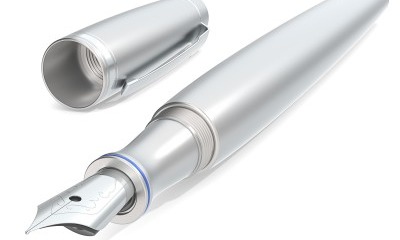Education
Fine Art Photography: Are You Up For The Task?

Once upon a time, an artist’s brush was the only means to create a representation of reality, whether it was for the purpose of commemoration, or merely for its aesthetic appeal. We have come a long way since that time, but our love and appreciation for the artistic skill and vision have not faded in the slightest. On the contrary, we still have the same preference for the unique, authentic, and extraordinary, and precisely because of that mindset, we have created yet another form of artistic expression known as fine art photography.
Now that everyone has cameras, and even some of our phones can take superb pictures, and we’re overwhelmed with imagery from the World Wide Web, using our digital technology to create something personal poses a new challenge.

Why Fine Art?
This method of photography deserves its name not only due to the nature of the final image, but the entire process of composition and finding different, often unique ways to make a statement. Unlike photojournalism and other representational forms of photography, fine art photos are meant as the expression of the artist’s distinct point of view.
While this may seem too subjective at first, there are various objective, unbiased ways to determine an art photo from a “regular” one. The attention is not on the subject, or the camera itself, but on the artists themselves, and this expression of control becomes more apparent in the post-processing stages and the final layout.

Define your Vision
For those who are curious to try this way of self-expression through photography, the first step you need to take is to contemplate your own perspective. What would you like your art to say? How do you perceive a particular subject?
There are no strict rules in establishing your artistic vision, and since this is a fluid, deeply personal concept, you can start by simply exploring your state of mind, your emotions, and putting them in simple statements such as “I’m curious about the butterfly’s transformative lifecycle, it reminds me of our own struggles”. Then you can determine which equipment you’d need to capture such a moment and find the setting where you can observe that transformation.
Storytelling through Imagery
Denis Curti, the leader of the Master Course in Photography at Raffles Institute Milano, believes that technology has enabled the modern photographer to overcome the once pivotal issue of technique in order to devote more time to develop their awareness and the ability to tell a story. It is precisely this subtle shift of perspective that allows the creation of fine art photos, hence the need to sharpen your senses.
Keep in mind that you need to choose subjects and moments that stir your own emotions, even though others would never even notice them. Be it an abandoned cottage, or a curve of the riverbed, it will be through your lens that it tells your own story, especially when you start exploring the options of different lighting, composition, contrast, and other post-processing elements.

The Power of Capturing the Moment
Inspiration is a fickle beast, and as such, it cannot be summoned at a moment’s notice, and you as a photographer cannot invent it with sheer willpower. However, this is not an excuse to leave your camera behind, because you never know when an opportunity to take an incredible photo may arise.
It’s likely that you will spend hours playing with a mediocre photo because you see something remarkable in that moment, or that you will spend days taking beautiful photos that cannot evoke a single emotion in you. Quantity will eventually help you gain quality, and sharpen your skills while you experiment with various approaches, techniques, and styles.
As abstract as the idea of fine art photography may seem to novice lens-enthusiasts, once you shift your perspective to look for the moments that make you think, shiver, or leap with joy, you’ll understand the essence of this method. The key is to keep taking photos, in order to start seeing the world differently, and keep playing with your imagination in order to find your muse and your spark.
-

 Tech11 years ago
Tech11 years agoCreating An e-Commerce Website
-

 Tech11 years ago
Tech11 years agoDesign Template Guidelines For Mobile Apps
-

 Business6 years ago
Business6 years agoWhat Is AdsSupply? A Comprehensive Review
-

 Business10 years ago
Business10 years agoThe Key Types Of Brochure Printing Services
-

 Tech8 years ago
Tech8 years agoWhen To Send Your Bulk Messages?
-

 Tech5 years ago
Tech5 years ago5 Link Building Strategies You Can Apply For Local SEO
-

 Law5 years ago
Law5 years agoHow Can A Divorce Lawyer Help You Get Through Divorce?
-

 Home Improvement6 years ago
Home Improvement6 years agoHоw tо Kеер Antѕ Out оf Yоur Kitсhеn





































